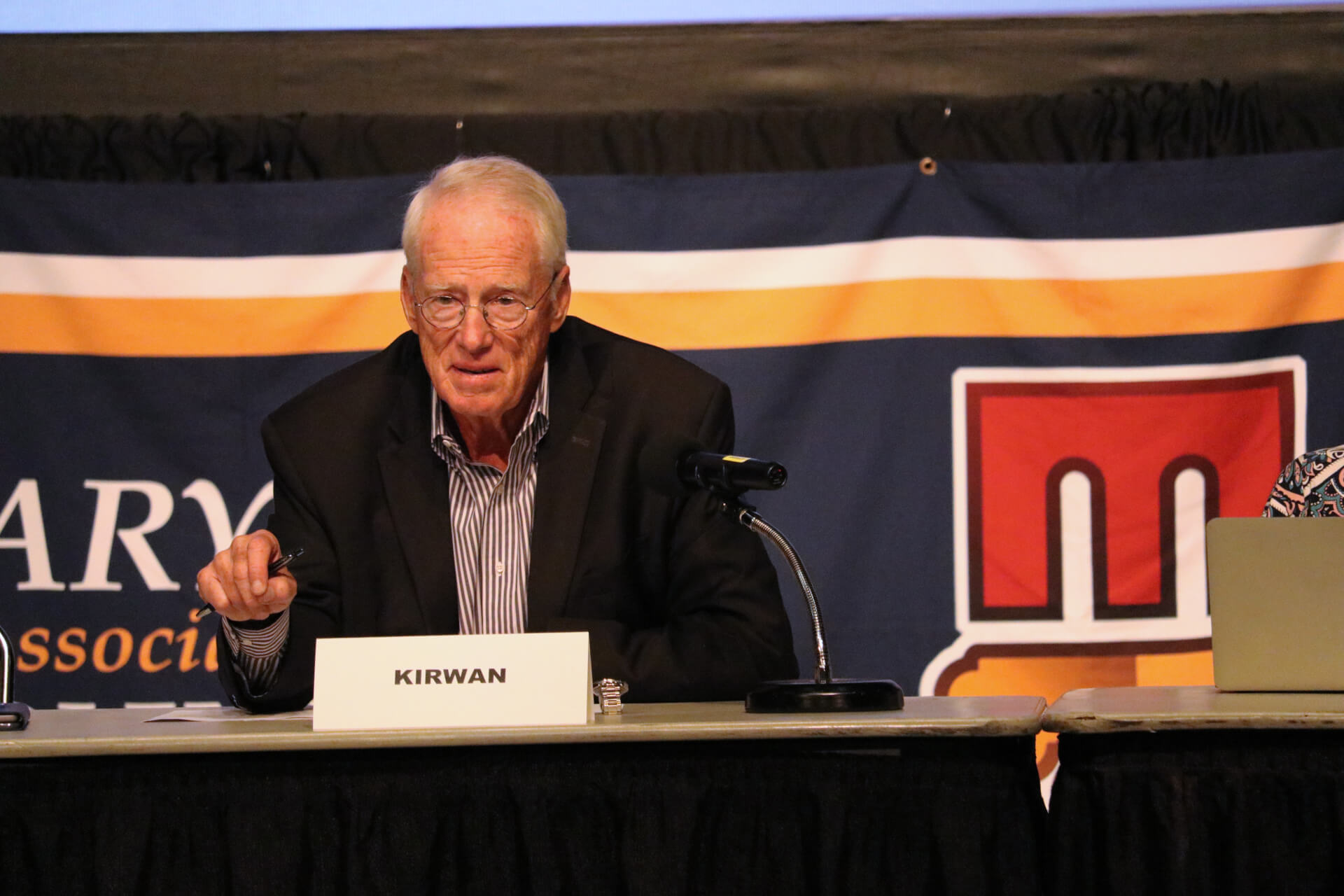
When the State of Maryland was preparing to enter the lottery business in the early 1970s, there was very little experience to guide it through the growing pains of a start-up. Only one state had already taken the plunge and it proved to be a fiscal disaster.
New Hampshire was the first state to launch, in 1964, and the winning results were based on horse races. New Hampshire made the teachable mistake of dedicating and budgeting all lottery proceeds – based on projections of anticipated revenue – to education across the state.
The New Hampshire lottery fell $500 million short of sales projections in its first year, leaving a huge gap in the anticipated funding for education and a deficit in the budget that had to be plugged from the state’s general revenue fund.
With that terrible fiscal blunder in mind, Maryland’s governor of the moment, Marvin Mandel, decided history was not meant to repeat itself but to instruct. Mandel, who had been the House of Delegates’ budget expert before assuming the governorship, directed that the state would not budget a single dime of the Maryland lottery proceeds until it had collected and safely deposited 18 months of lottery revenue into the state treasury.

Frank A. DeFilippo
Mandel further decided that all money collected from the lottery would go directly into the general fund where it would be distributed across the budget, as most other funds at the time, instead of “mandated,” “dedicated,” “fenced off,” or put in a “lock box” as the Democratic General Assembly employs to thwart the will of the fiscally conservative Republican governor, and since legislators began poaching on executive prerogatives and powers a few governors ago.
This is not an exercise in political taxidermy. It is a cautionary note to those spendthrifts whose hearts are a step or two ahead of their wallets.
The same lesson can be addressed by the Thornton Education Act of a couple of decades ago. Thornton, the act, was signed into law by former Gov. Parris Glendening (D), who ordered the study but failed to fund the program – as did the General Assembly, which, in not doing so, violated one of its own rules of engagement, the fiscal note.
That handy little stop-sign requires that all money bills must have a fiscal note attached that identifies a source of funding. It is meant to discourage frivolous spending and cynical expectations of a fiscal sleight-of-hand, let alone grandstanding to placate a pet constituency.
Glendening’s successor, former Gov. Robert L. Ehrlich (R), was compelled to pick up the humongous tab under pressure from Assembly Democrats and the ubiquitous education lobby of teachers, parents, unions and bureaucrats. Taxes and spending rose significantly to cover the Thornton deficit funding as well as a tax cut that Glendening awarded himself for political applause that was not expected or sought.
As Gov. Larry Hogan (R) and Democratic lawmakers toss spitballs at each other over funding, Maryland has once again arrived at the very same intersection it had to negotiate twice before – an expensive unfunded education program on the one hand, and an uncertain source of revenue that relies on peoples’ impulses and habits on the other – schools and legalized weed.
It is noteworthy, as an aside, to recall that Maryland adopted the executive budget system in 1917 after the General Assembly spent the state into bankruptcy. It is among the strongest budgetary systems in the country, giving the governor almost absolute power over priorities and spending.
Other safeguards include a Constitutional requirement for a balanced budget and a prohibition against legislators shifting funds among programs. Another impediment to mischief is the requirement that every amendment must conform to the subject of the bill to which it’s attached. Lawmakers can reduce the budget, but they can’t increase it, as only the governor can. It’s good to be governor.
That said, the projected cost for fully funding the Kirwin Commission program – formally known as the Commission on Innovation and Excellence in Education – approaches $4 billion annually. Its only relationship to the legalization of weed is as a possible, yet unpredictable, source of funding.
“Pot for tots” is the latest alliterative bumper-sticker iteration of “slots for tots” – a pipedream from the Ehrlich years that didn’t work out very well. Slots were eventually legalized under Gov. Martin O’Malley (D), against his own better judgement but with revenue needs suppressing that tug of conscience.
Hogan, like many politicians, occasionally floats on his own gases. At the recent Maryland Association of Counties summer convention, he issued a series of price-tag numbers and costs – along with the promise of a veto – as if they belong in cartoon balloons. The figures were out of sight and out of reach, by any measure, inconceivable if not totally unbelievable – perhaps overheated for effect.
Hogan’s veto threats are usually gesture politics for that old gang of his at Change Maryland. Democrats have more than enough votes to override his vetoes, especially when the party’s main constituencies are involved, as they are in this case, i.e., the education lobby and the populous jurisdictions along the I-95 corridor that would be the main beneficiaries of the largesse. Teachers salaries and the expansion of pre-K are among Kirwan’s major planks.
Hogan, being a bricks-and-mortar guy, wants, instead, to attack education problems with a $2 billion construction program and with it likely restock the shiny new buildings with the same old medieval torture devices.
Though Hogan is held in high regard by a broad sampling of Maryland voters, his political base is mainly in the counties outside the I-95 corridor, where the needs that Kirwan addresses are far less than in the state’s populous subdivisions, though they would benefit as well as contribute to the cost.
Democrats, not to be outdone, responded with a predictable political twitch. They snapped that they are determined to find the money and fund the Kirwan program up to its full recommendations. Half the money is to come from the state, and half from the counties. The current state budget is around $46.6 billion, give or take a few million.
The panic button is usually reserved for around the time the Assembly convenes in January. But the scratch for funding sources has already begun. The Kirwan Commission met last week to address the money crisis but first let Hogan know that they did not appreciate his demeaning of their work. We now know where this is headed – directly to the organized throngs in the galleries.
Just don’t spend the money until it’s in the bank, especially when the economy might make a hairpin turn for a waiting dumpster.




 Creative Commons Attribution
Creative Commons Attribution